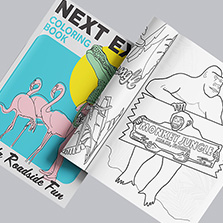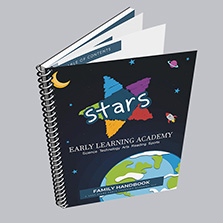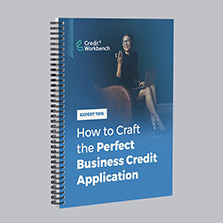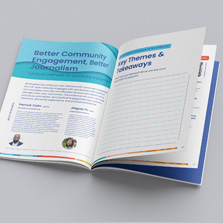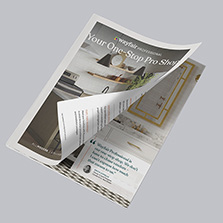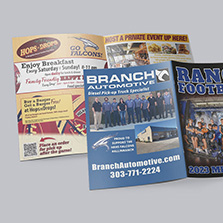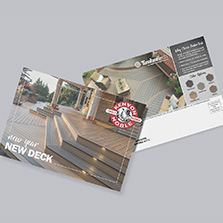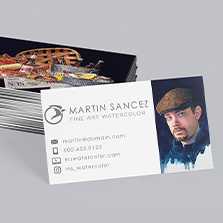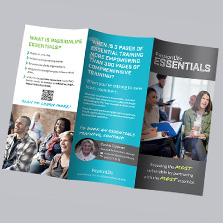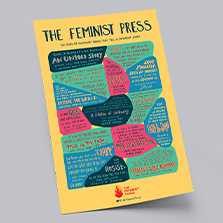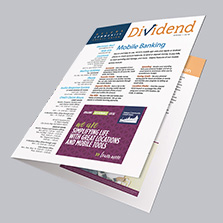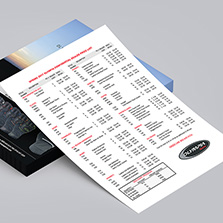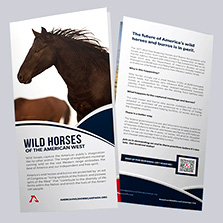
Behind The Print: Luxury Real Estate Unlocked with Debbie Stevenson
Welcome to the latest episode of Behind The Print, where we bring you the creative stories of industry leaders shaping the world of professional printing. In this episode of Behind The Print, we’re joined by luxury realtor and former journalist Debbie Stevenson of Sotheby’s International Realty. With a deep love for storytelling and Texas ranch life, Debbie shares how she combines print, precision, and passion to market high-end properties with lasting impact. From spec books to staging, her approach shows how thoughtful branding and powerful presentation can turn listings into legacy. If you love real estate, strategy, or stories that stick, this episode is for you.
Below, you’ll find the transcript of our conversation, edited for clarity to ensure easy reading. If you want the full, authentic experience, make sure to check out the video attached below.
14-minute read
“There are three types of readers: the headline skimmer, the highlight hunter, and the detail digger. My print materials are built for all three.” Debbie Stevenson, Broker & Licensed Texas Auctioneer from Cooper Sotheby’s International Realty
Transcripts from Behind The Print with Trixie Gynn, CEO, Publisher, & Editor of Custom Trends Magazine and TV
Welcome back to Behind The Print podcast, where we feature industry leaders and uncover the creative minds behind businesses in the professional printing world. Our mission is to provide you with inspiring, actionable resources to elevate your business projects and accelerate your journey to excellence in profit and print.
Today’s episode is Luxury Real Estate Unlocked and I’m joined today by broker and licensed Texas auctioneer from Cooper Sotheby’s International Realty. We have Debbie Stevenson!
Debbie Stevenson: Hi. Nice to meet everyone.
Zoe Fisher: We are so glad to have you on the show, Debbie! I just have to know, who do you serve as broker?
“I do what we call the spec books… I want my style, my way, when I’m showcasing my properties.” Debbie Stevenson, Broker & Licensed Texas Auctioneer from Cooper Sotheby’s International Realty
Debbie Stevenson: I sell a lot of property along I 35 between Austin and Waco. Our brokerage is based in Austin, and we specialize in acreage properties, usually 10 to 20 acres, including luxury, equestrian, farm, and ranch homes.
Zoe Fisher: That sounds amazing! So, for those equestrians and specific niche industry people who are looking to buy a property, how do you help those people?
Debbie Stevenson: It depends on the type of horse. Quarter horses, which are common in Texas, usually need a 12 by 12 stall and larger arenas. Warmbloods and dressage horses, which are much bigger, need at least a 16 by 16 stall but often a smaller arena since their work is more precise. For eventing or jumping, they need both small and large arenas. In Texas heat, most competitive owners prefer a covered arena to protect coats and prevent overheating. As for land, you need at least an acre and a half per horse, and for cattle, around two to two and a half acres per head.
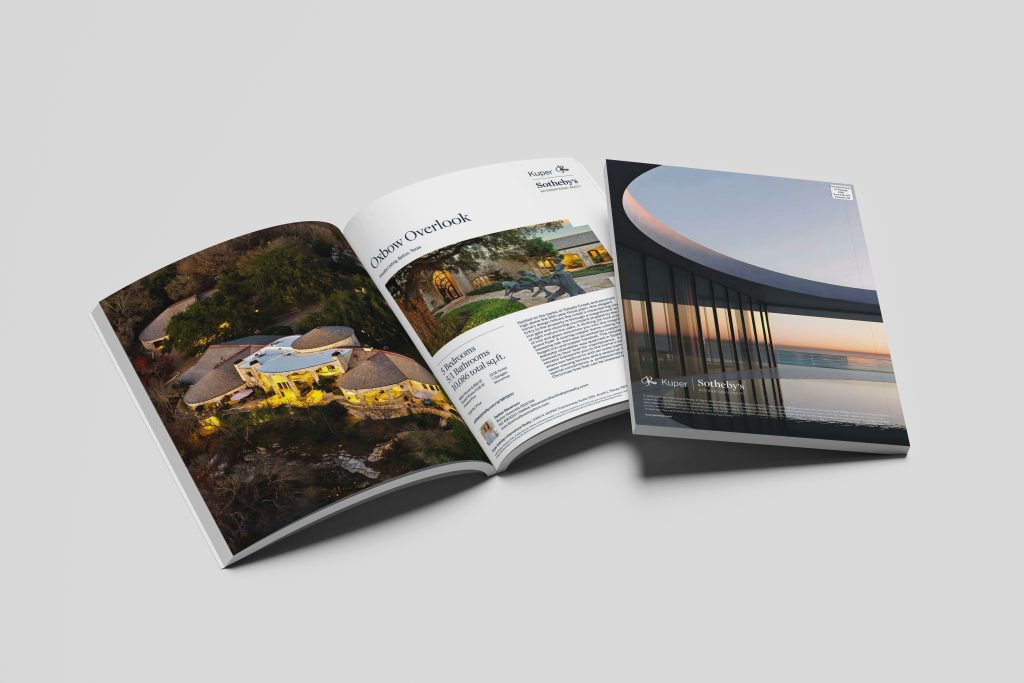
Zoe Fisher: Interesting! So, how does your agency stand out from other real estate professionals that do this too?
Debbie Stevenson: Sotheby’s began over 300 years ago in London as an auction house focused on art and people’s most prized possessions. It eventually moved its headquarters to New York and expanded into real estate in the 1970s. The brand brings a legacy of luxury to the housing market and is well suited for buyers who value privacy, often with multiple properties. With Debbie’s Texas auctioneer license, her team can offer full service support, from acquiring estates to helping clients navigate agricultural exemptions that are key in Texas, where property taxes can be steep.
Zoe Fisher: That legacy and specialization truly set your brokerage apart.
Debbie Stevenson: We are very focused on quality in our advertising. Everything is carefully controlled and consistent, from the logo to the overall presentation. The Sotheby’s brand is instantly recognizable and represents the highest standard of service. Everyone who works under the name is expected to be experienced and uphold that level of excellence.
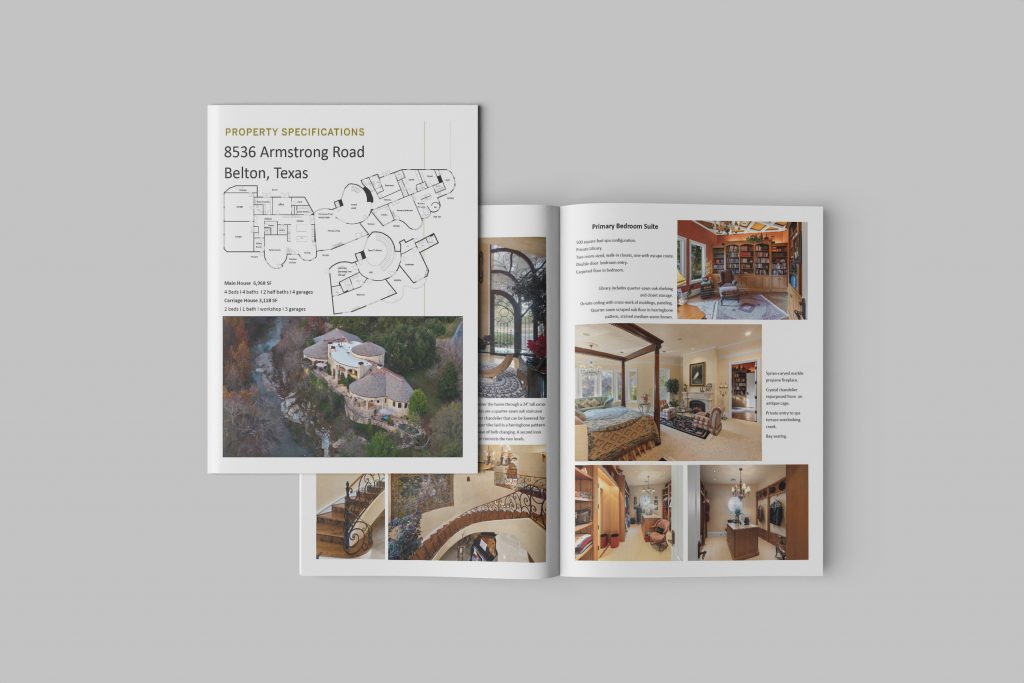
Zoe Fisher: And I love how you mentioned luxury because just looking over some of your printed files that you print with us, oh my goodness, it screams luxury. How do you use print to stand out in the equine real estate industry?
Debbie Stevenson: I’m a little different from the typical broker because I started out in journalism, working as a war correspondent for Reuters. That background shapes how I market properties. MLS platforms limit how many words and photos we can use, so I create printed spec books that tell the full story, especially for large, high value properties.
For example, I have a listing in Belton that includes a main house, a carriage house, 13 acres, 23 geothermal wells, backup power, and engineering designed to withstand Texas weather and rising creeks. Buyers need those details, and I make sure they get them. I write and edit all my materials myself. I like things accurate, custom, and styled my way.
Zoe Fisher: And that’s just so interesting how you can fit so much into one little book and have all those details in there for all those different types of clients.
Debbie Stevenson: It goes back to my newspaper days. We had to fit a lot of information into a limited amount of space, so every word mattered. If a reporter turned in a 12 inch story and we only had room for 10, it was the editor’s job to trim it down while keeping the key message intact. That taught me how to write clearly, use bullet points, and get the most out of every sentence. These are skills I still use when creating marketing materials for listings.
“Those two search engines, Zillow and Realtor.com, are only as good as the agent input. But with print, you can tell the full story.” Debbie Stevenson, Broker & Licensed Texas Auctioneer from Cooper Sotheby’s International Realty
Zoe Fisher: That is so interesting. I never even thought about it like that, but even in my work, I totally see what you’re saying, where you have to shorten things up, make it nice and tidy, stay specific to the point.
Debbie Stevenson: See! Right there! I can totally change things up. Yeah, we can lose the word “totally” and gain a line!
Zoe Fisher: True! So, what major milestones have defined your career?
Debbie Stevenson: I lost my mother early in life, but she left a lasting impact. She was from England, loved Reuters and art, and took me to Sotheby’s in London as a child. Journalism was my first career, and it aligned well with the military lifestyle since my husband and I moved frequently.
Eventually, I needed a change. I had covered difficult stories like the Fort Hood shooting, and I reached a point where I wanted something different. Real estate had always been a passion. We had acquired and flipped properties over the years, so it felt like a natural next step.
I never forget my roots. Whether it’s a three hundred thousand dollar home or a three million dollar estate, I bring the same dedication. Joining Sotheby’s felt like a full circle moment for me and would have made my mother proud. I was invited to co-list a forty acre property in Ding Dong, Texas, and that led to a call from Mary Lou York, the sales manager at Sotheby’s, who said, I have been told that if I don’t bring you in, I am missing out.
From that moment on, she welcomed me into the Sotheby’s family. We spoke weekly until she passed, and her warmth and charm made the transition unforgettable.
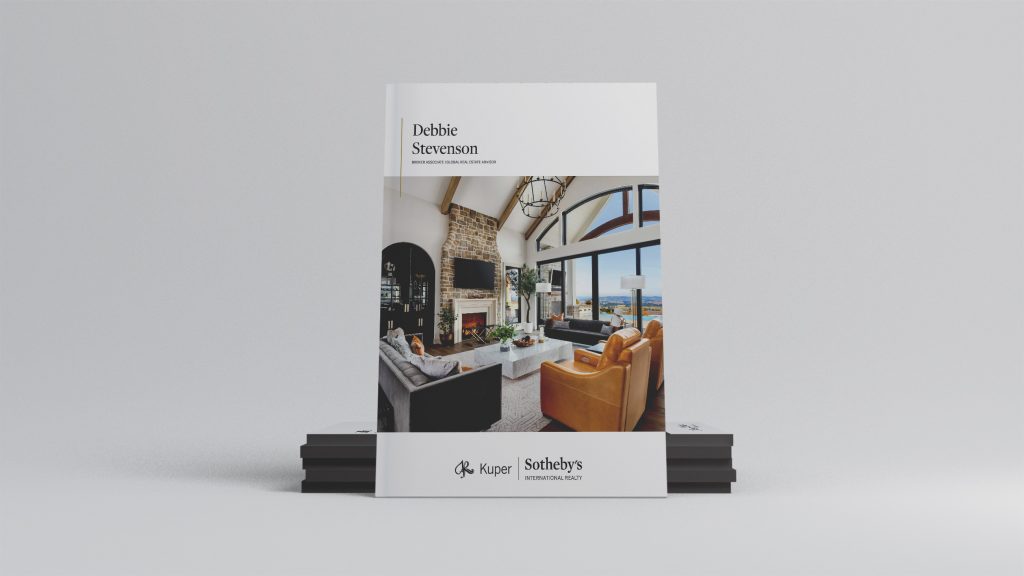
Zoe Fisher: That’s amazing. You’ve done so much! For my next question, I’m wondering what are some challenges holding you back in the industry right now?
Debbie Stevenson: I think one of the biggest issues has been the lawsuit for the buyer commissions with the National Association of Realtors. As a former journalist, one of the biggest frustrations for me was I know the reporting pool and I know how they work. It’s not that they wanted to feed us misinformation. That couldn’t be furthest from the truth. They were feeding what they were being given. And most reporters particularly out in Missouri where the lawsuit originated have probably only owned one or two houses, if they’ve even owned a house.
It’s not a high paying profession by any stretch of the imagination, but it’s a powerful profession. But if you are reporting on something you really don’t know about, you’re going to defer to the experts and that the only experts who are talking, the plaintiff’s attorneys, well, of course you’re getting that side of the story.
The National Association of Realtors who were supposed to represent her was just paralyzed. They didn’t do any of the talking. They left it to those of us on the ground to pick up the pieces and explain to everybody. Buyer commissions are not set in stone. No commission has ever been set in stone, but so where did this three and 6% come up? It’s simple. When you are setting or calculating your income, you look at what it takes to survive where you are living. Lawyers do that. The I can guarantee those plaintiff’s attorneys did that. Doctors do that. Your employer has done that. And they’re going to base how much they pay you based on that too, so they can attract talent, but also so that they can afford to keep their operations wherever they’re operating.
Well, when you look at the average sale price per house, it doesn’t matter whether it’s 3 million in California or 300,000 in Killeen, Texas. Okay. You calculate. I make, one sale per month. Okay, this is, what it costs for me. I have to buy that $300,000 house too! I have $300,000 level overheads and where it came was the national average, no matter where you are applied. And that was where that 3% it takes. 12 sales at this amount, earning 3% after I pay my taxes, my brokerage fees, my overhead. This is what it takes for my mortgage and my utilities and my expenses, to send my kids to school, to put clothes on my back, to keep my car running, to run you around to find that next $300,000 house, right? And so that was where that average set in. And then most the sellers & the listing agent would negotiate the actual commission rate. And that would be then published on MLS as a 50 50 split. So, if the listing agent had negotiated 5%, it was two and a half percent posted on MLS. Then you bring us the buyer, you’re going to get 2.5%. The listing agent obviously was getting two and a half percent as well.
In some cases, if a client wanted full staging, I would negotiate a 7% commission. That extra 1% went to me because I was handling the staging myself. I maintain a warehouse, purchase and transport furniture, replace damaged items, and rotate pieces to keep listings fresh. That was where some misunderstandings came from.
It’s not that we can’t publish that. It’s that the buyer has to now advertise to the buyer’s agents. They will say, “Okay, you’re going to get this if you come to us.” So, now the buyer’s agent has to say, “Is the seller willing to do?” Now the seller doesn’t always say, yes, I’m going to do this upfront. As the listing agents, we now have to say, “Do you want to do this? And if you do, what do you want to offer them?”
They may be paying me my 3% because I stick as a listing agent. That is my minimum, depending on what else you want, and I call it a fee. I don’t call it a commission, but sometimes for other people, because it’s still a negotiation item, I will still say, “You know what? You’re a repeat client. I’m gonna give you a discount”, or “This is gonna be such a quick sale, let’s just go ahead and lower it.”
And sometimes if the costs are more than we envisioned, I will say, look, I’ll knock some off of mine. But at the same time, nothing is set in stone. That’s a violation. That’s what we were accused of doing, and that couldn’t have been further from the truth. Even if we do have it in the contract, I’m earning three or two or 4% sometimes.
It just to get the place sold. We’re gonna help. The seller, or the buyer. We come together and we say, look, this, seller is so tapped. This buyer’s lender requires this. Let’s deduct and let’s get them to the closing table. So nothing was absolutely ever set in stone, but all these headlines have now created such confusion.
The NAR has really received an industry backlash because of this. But the confusion now is set, and we have to really sit down, and that has probably been the biggest uphill battle that most of us have faced. Plus, and it couldn’t have come at a worst time in which interest rates have been climbing and all the talk of tariffs and how expensive things are going to be. And then we got people sitting on 2% interest rates and saying, I want to sell my house because I don’t want to have to pay a 7% mortgage. So, all of those factors have created a perfect storm in real estate that we’re now having. You have to be really on top of a game to know how to navigate that and work through it. But if you think about 7% interest rate. Gosh, that’s frightening, right? Yeah. Look at the historic high was 18% at the end of Jimmy Carter’s term, and you look at the historic low, which was the COVID Pandemic at 2%, which I’m sitting on, 7% is the average and the prices are coming down.
It was a bubble market. Now they’re coming down. So even though your interest rate’s gone up, your housing prices come down. So, we’re averaging out. But that needs to be explained.
“She told me, ‘Debbie Stevenson, if I don’t bring you into Sotheby’s, I’m missing out.’ And from then on, we’d start every call with, ‘Well good morning, Debbie Stevenson.’ ‘Well good morning, Mary Lou York.’” Debbie Stevenson, Broker & Licensed Texas Auctioneer from Cooper Sotheby’s International Realty
Zoe Fisher: That clears things up! Thank you for explaining it so thoroughly.
Debbie Stevenson: That was the whole premise of the lawsuit. The claim was that commission rates were set in stone or being pooled. Some agents who were interviewed seemed unsure about the situation, and honestly, many of us were confused too. Our trade association, the one being sued, was not speaking publicly, so we were left wondering why we were being targeted.
If you understand antitrust laws, then you know that conspiring to set a commission rate is illegal. Even just saying out loud, “I charge six percent and that is standard,” can be a violation. Everything in real estate is negotiable, including commissions. And personally, I have no issue negotiating up if I am doing more work. Agents need to understand their worth and stand behind the value they bring.
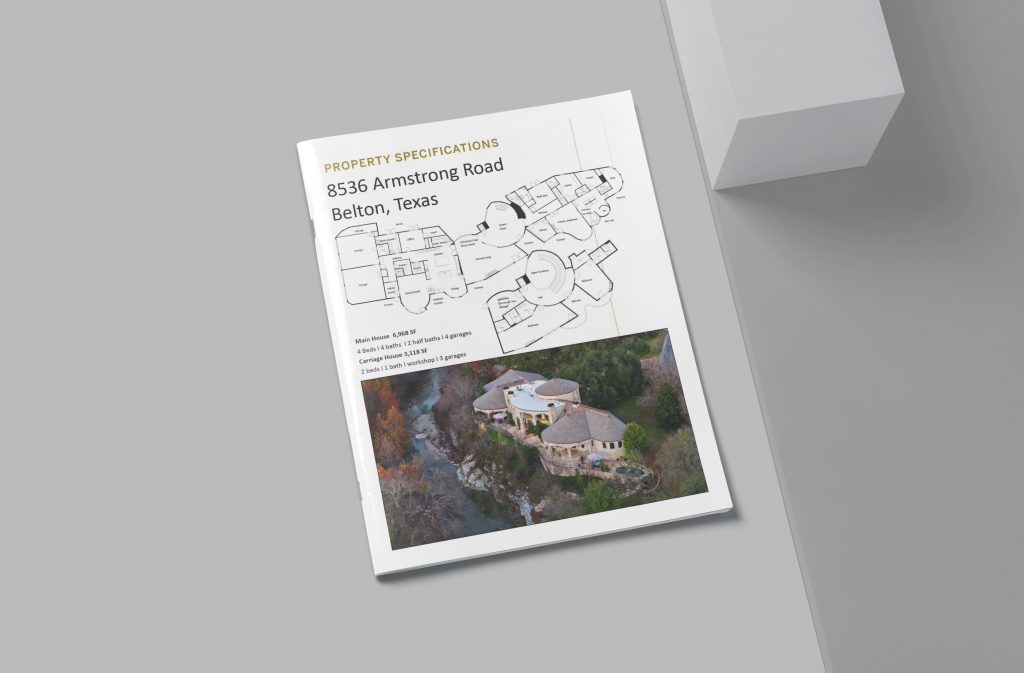
Zoe Fisher: So, if you had a day completely free to spend however you’d like, would you be with the horses?
Debbie Stevenson: Of course. Although my horse had other ideas last week. I went up to him after an open house. It was one of the warmer days we have had in Texas, definitely a reminder that summer is still coming. My horse was bred in Canada and came down from Montana, so he is not quite acclimated to the Texas heat.
He was in his stall, saw me coming, and bolted out, turned around, and looked at me like, “Not today, Josephine.” The weather was just too much. He stopped at a distance, and every time I stepped forward, he stepped back like, “Nope.” I told him, “Bear, I am still in my open house clothes. Do I look like I am ready to ride?”
“Everything is negotiable in real estate. But that old saying, “until you hear no, it’s negotiable” includes commissions! And I can promise you I’ll negotiate up. You start wanting more and more from me, I know my worth.” Debbie Stevenson, Broker & Licensed Texas Auctioneer from Cooper Sotheby’s International Realty
Zoe Fisher: That is so cute. Aw, we’re up here in Montana too, so I’m right there with him. I totally feel his pain
Debbie Stevenson: He’d probably love to talk to you right now.
Zoe Fisher: Awesome, Debbie. Tell me how can our listeners get in touch with you or work together?
Debbie Stevenson: My website is DSCentralTexasRealtors.com. that’s DS as in Debbie Stevenson, Central Texas Realtors with an S. You can also find me on Facebook at Debbie Stevenson Realtor or call me at (512) 468-8210.
If I do not pick up, please send a text.
Zoe Fisher: Thanks Debbie!
That’s a wrap on another episode of Behind The Print. Thanks to our listeners for joining us as we explore the artistry and innovation of the printing world. Remember, have a strong vision, build the right strategy, and use tools like print to amplify your message and make your brand stand out.
If you enjoyed today’s episode, be sure to get your sample pack today from PrintingCenterUSA.com and share it with your fellow business enthusiasts. Until next time, keep your creative sparks flying, and remember, there’s always more to discover behind the print.
More Than a Home, It’s a Legacy
Debbie Stevenson brings passion and precision to Texas real estate. With a background in journalism and a talent for storytelling, she uses print to elevate every listing. From custom spec books to stunning visuals, her work shows that print is a powerful tool in building trust and creating lasting impact. Order today!
Listen to the full episode on Spotify or check out the interview on YouTube!



